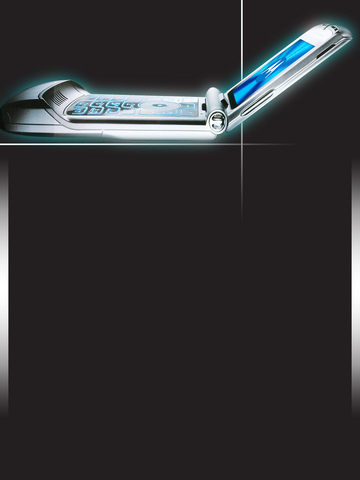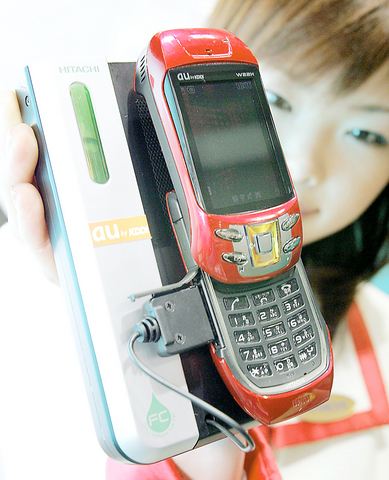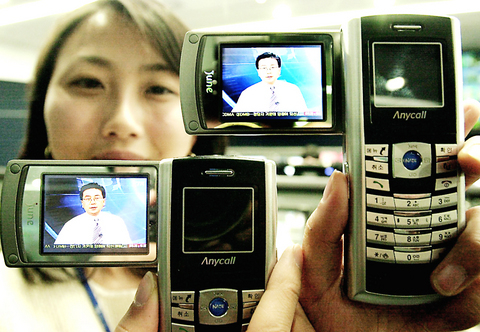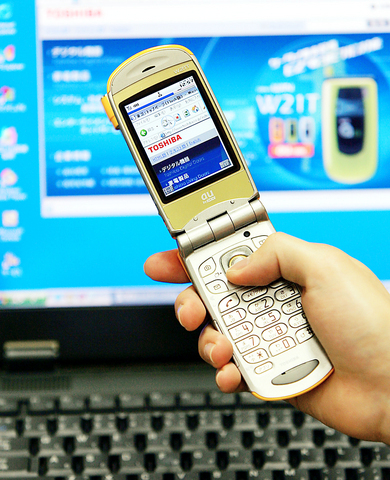Given that there are usually more than 10 new brands of mobile phones every year and the big names have different lines, it sometimes gets a bit difficult to tell one phone from the other. Because of this most phones are categorized with a model number preceded by a letter, and although some letters are chosen randomly, others are actually abbreviatians for something pertinent.
Take Motorola, which has five major categories of phones. The first is the popular ``Moto-chic'' clam shell, identi-fied by the letter ``V'' followed by a number: V80, V878 or V60. Then there's ``Moto-tech'' smart phones, with the letter ``A'': A768i or A780. The letter ``C'' signifies the entry-level phone with basic functions, as in the C650, C550 and C375. The ``Moto media,'' with its more advanced entertainment functions, has the ``E'' prefix, such as the E398 and E680. The ``Moto Pro'' segment is a little more special and at present only has two phones, the MPx and MPx220.

LG already has 14 models on the market in Taiwan. In the beginning, there was the G series -- quite easy to remember. But then the range grew and the G7200 was released last year, only to be superceded by the T, F, L and C lines. The first two letters are short for the English words ``technique'' and ``fashion,'' while the last two come from the Chinese words for ``stylish'' and ``basic.''

PHOTOS: AGENCIES
There might be some initial confusion over what difference there is between the ``fashionable'' F series and the ``stylish'' L series. The fashionistas tell us that the F2100 has a more mature beauty, while the L1100 and L3100 are more radically chic and are intended for the young and trendy.
As for Sony Ericsson, which has placed its emphasis on quality rather than quantity, it only has 10 models or so out on the market, so it isn't as difficult to get confused. And in any case, the letters before the model number signify something quiet different. Sony Ericsson's T series uses a vertical format; its Z series folds in half; its P series are smart; its K series are equipped with cameras; and its J series are that now hard-to-find article: a cell phone that cannot take photographs.

Generally, the higher the number that follows the letter, the more functions the cell phone has. In Sony Ericssons, the K700i and the K500i might look alike, but its what's inside that makes all the difference: 41 megabites of memory as opposed to just 12 megabites.

The letter that follows the model number in the Sony Ericsson series also performs the important function of differentiating region. The ``i'' at the end of K700i designates an international version, an ``a'' designates an American version and ``c'' designates the version for China.
Nokia stands out in not using letters to categorize its cell phones. Since it started out, it has always used four numbers to designate its models.

Looking at the various models and their numbers, we can work out that the models starting with ``3'' are intended for the younger market. The musical 3300 and the colorful 3100/3220 with its array of interchangeable multicolored cases attest to this.
Meanwhile, the ``6'' series are targeted at executives. These have evolved from the practical designs for office workers into smart phones with a slew of functions that can cater to the needs of the busiest executive.
The ``7'' series includes Nokia's folding phones, which started off with the standard 7200 but have evolved into the main weapon in Nokia's fashion arsenal, with the 7260, 7270 and 7280 part of the company's ``total fashion'' array.
The ``8'' series has not had any new models for quite some time now, but it has established itself as a classic. Many fans are even willing to spend NT$3,000 to buy a new case for it rather than get a new phone for less.
Translated by Paul Cooper and Ian Bartholomew.

May 26 to June 1 When the Qing Dynasty first took control over many parts of Taiwan in 1684, it roughly continued the Kingdom of Tungning’s administrative borders (see below), setting up one prefecture and three counties. The actual area of control covered today’s Chiayi, Tainan and Kaohsiung. The administrative center was in Taiwan Prefecture, in today’s Tainan. But as Han settlement expanded and due to rebellions and other international incidents, the administrative units became more complex. By the time Taiwan became a province of the Qing in 1887, there were three prefectures, eleven counties, three subprefectures and one directly-administered prefecture, with

It’s an enormous dome of colorful glass, something between the Sistine Chapel and a Marc Chagall fresco. And yet, it’s just a subway station. Formosa Boulevard is the heart of Kaohsiung’s mass transit system. In metro terms, it’s modest: the only transfer station in a network with just two lines. But it’s a landmark nonetheless: a civic space that serves as much more than a point of transit. On a hot Sunday, the corridors and vast halls are filled with a market selling everything from second-hand clothes to toys and house decorations. It’s just one of the many events the station hosts,

Among Thailand’s Chinese Nationalist Party (KMT) villages, a certain rivalry exists between Arunothai, the largest of these villages, and Mae Salong, which is currently the most prosperous. Historically, the rivalry stems from a split in KMT military factions in the early 1960s, which divided command and opium territories after Chiang Kai-shek (蔣介石) cut off open support in 1961 due to international pressure (see part two, “The KMT opium lords of the Golden Triangle,” on May 20). But today this rivalry manifests as a different kind of split, with Arunothai leading a pro-China faction and Mae Salong staunchly aligned to Taiwan.

Two moves show Taichung Mayor Lu Shiow-yen (盧秀燕) is gunning for Chinese Nationalist Party (KMT) party chair and the 2028 presidential election. Technically, these are not yet “officially” official, but by the rules of Taiwan politics, she is now on the dance floor. Earlier this month Lu confirmed in an interview in Japan’s Nikkei that she was considering running for KMT chair. This is not new news, but according to reports from her camp she previously was still considering the case for and against running. By choosing a respected, international news outlet, she declared it to the world. While the outside world